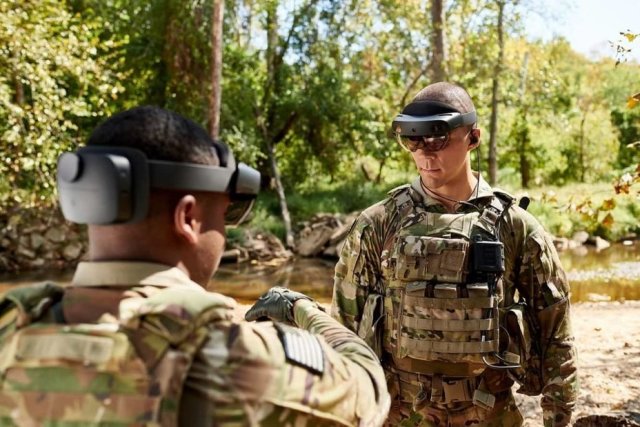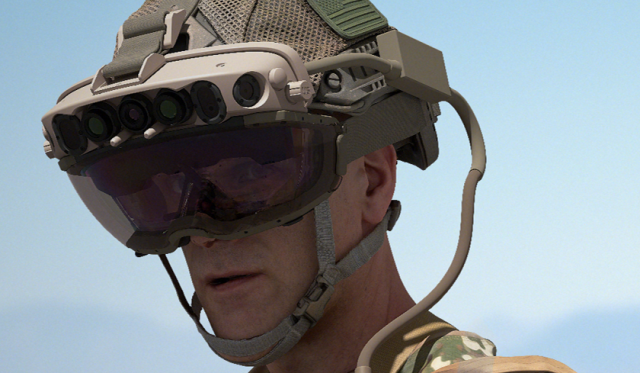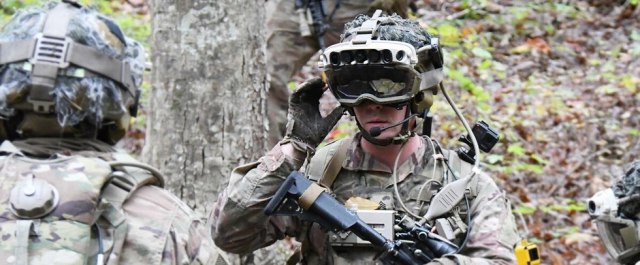American soldiers will be able to see additional information, as in the interfaces of computer games. On March 31, Microsoft announced the transition of the Integrated Visual Augmentation System (IVAS) program from prototyping to mass production, and yesterday the portal armytimes.com provided details of the contract with the US Department of Defense.
The contract is designed for ten years and will cost the US Department of Defense $21.88 billion. The parties did not disclose the volume of deliveries of army augmented reality glasses, but earlier it was said about the army's need for 100,000 units.

Test samples of IVAS augmented reality glasses
Image source: defence-blog.com
"The IVAS headset, based on HoloLens and complemented by Microsoft Azure cloud services, provides a platform that will make the soldier service more secure and efficient. The program provides increased situational awareness, allowing you to share information and make decisions in different scenarios. Microsoft has worked closely with the U.S. Army for the past two years, and together we pioneered soldier-centered design to enable rapid product prototyping to provide soldiers with the tools and capabilities they need to complete their mission»,- reported in the press service of Microsoft.

IVAS serial sample image
Image source: microsoft.com
HoloLens is a head-mounted hoop with tinted lenses located in front of the eyes with a wave-like prismatic structure that refract and send images to the user's eyes from microdisplays located on the sides. Unlike most other virtual, augmented, or mixed reality devices, HoloLens are self-contained and do not require a PC connection.
The military modification of the HoloLens will be significantly different from the existing versions. In particular, it will receive a built-in thermal imager and a night vision device. At the same time, the headset can be used both for training and for combat use. The US Department of Defense previously stated that they intend to bring IVAS technology to the level where, with the help of a single device, soldiers will be able to receive information on the augmented reality screen for full situational awareness, fully see at night, and also distinguish civilians from enemy soldiers.
The IVAS prototypes had a mass of just over 1 kg and a battery life of at least 8 hours. It is known that the US army has already tested the transmission of video broadcasts from drones to IVAS screens, as well as sending a three-dimensional plan of the room and visual navigation tips to the soldiers ' glasses when storming the building.



